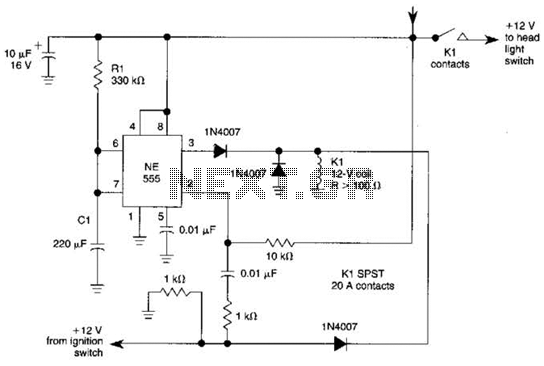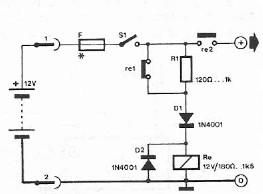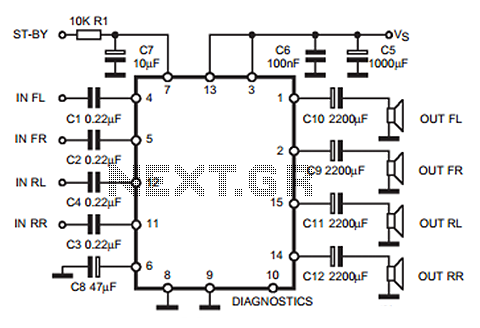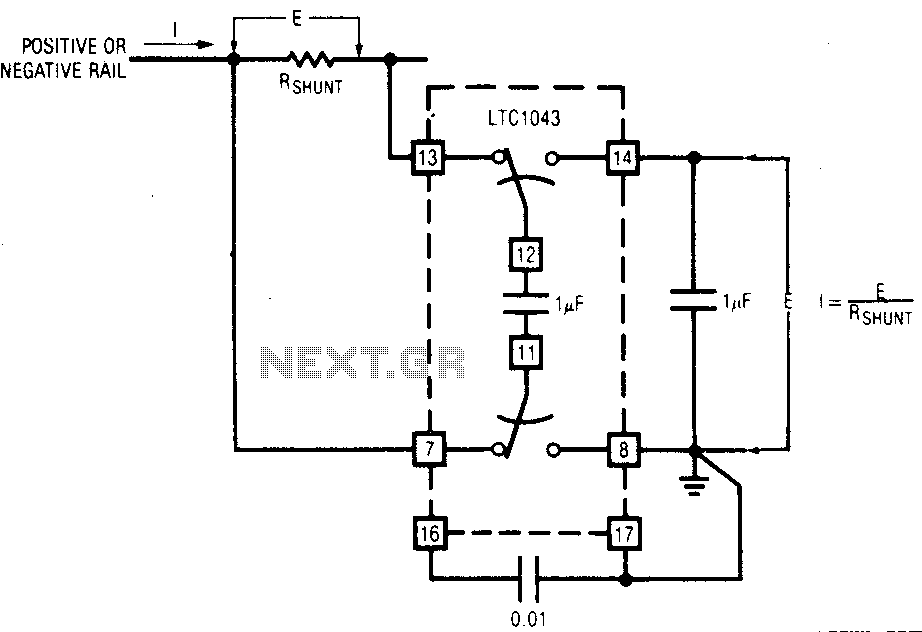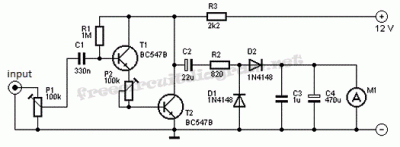
tv transmitter circuit
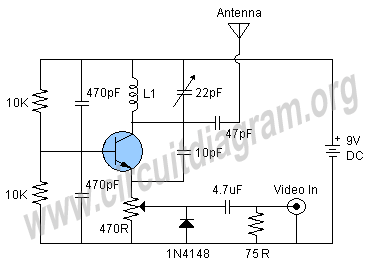
Here is a simple schematic of a TV transmitter circuit, or video transmitter circuit, capable of broadcasting in the VHF range from 60 to 200 MHz. The input video source can be any CCD camera or VCR. The output power of this VHF transmitter circuit is 80 mW, and it employs a telescopic antenna. The circuit utilizes a single transistor, which can be a BC337, N2222, BC546, or BC108. For the inductor L1, six turns of #24 enameled wire should be wound on a 10 mm air former to achieve the desired frequency range of 60 to 80 MHz.
The described TV transmitter circuit operates within the VHF frequency range, making it suitable for short-range broadcasting applications. The primary components include a transistor, which serves as the active amplification element, and an inductor, which is crucial for tuning the circuit to the desired frequency. The choice of transistor—BC337, N2222, BC546, or BC108—provides flexibility in component selection based on availability and performance characteristics. Each of these transistors has suitable gain and frequency response for this application.
The inductor L1, wound with six turns of #24 enameled wire on a 10 mm air former, is essential for the oscillation and frequency stability of the transmitter. The number of turns and the diameter of the former directly influence the inductance value, which in turn affects the resonant frequency of the circuit. It is important to ensure that the inductor is properly constructed to minimize losses and maintain efficiency.
The output power of 80 mW is adequate for local transmission, and the use of a telescopic antenna enhances the range and quality of the broadcast signal. The antenna's design should be matched to the operating frequency to optimize performance. Proper grounding and shielding techniques should be employed to minimize interference and enhance signal clarity.
In summary, this simple VHF transmitter circuit is a practical solution for low-power video broadcasting, suitable for hobbyists and educational purposes. Careful attention to component selection, circuit layout, and tuning will result in an effective and functional transmitter capable of delivering quality video signals within the specified frequency range.Here`s a simple schematic of a TV transmitter circuit or video transmitter circuit which is able to broadcast on VHF between 60 to 200 MHz. The input video can be from any CCD camera and VCR. The output power of this VHF transmitter circuit is 80mW and by using telescopic antenna this The circuit is using only one transistor that can be a BC337, 2
N2222, BC546 or BC108. For L1 wound 6 turns of #24 enameled wire on a 10mm air former for frequency 60 - 80 MHz. 🔗 External reference
The described TV transmitter circuit operates within the VHF frequency range, making it suitable for short-range broadcasting applications. The primary components include a transistor, which serves as the active amplification element, and an inductor, which is crucial for tuning the circuit to the desired frequency. The choice of transistor—BC337, N2222, BC546, or BC108—provides flexibility in component selection based on availability and performance characteristics. Each of these transistors has suitable gain and frequency response for this application.
The inductor L1, wound with six turns of #24 enameled wire on a 10 mm air former, is essential for the oscillation and frequency stability of the transmitter. The number of turns and the diameter of the former directly influence the inductance value, which in turn affects the resonant frequency of the circuit. It is important to ensure that the inductor is properly constructed to minimize losses and maintain efficiency.
The output power of 80 mW is adequate for local transmission, and the use of a telescopic antenna enhances the range and quality of the broadcast signal. The antenna's design should be matched to the operating frequency to optimize performance. Proper grounding and shielding techniques should be employed to minimize interference and enhance signal clarity.
In summary, this simple VHF transmitter circuit is a practical solution for low-power video broadcasting, suitable for hobbyists and educational purposes. Careful attention to component selection, circuit layout, and tuning will result in an effective and functional transmitter capable of delivering quality video signals within the specified frequency range.Here`s a simple schematic of a TV transmitter circuit or video transmitter circuit which is able to broadcast on VHF between 60 to 200 MHz. The input video can be from any CCD camera and VCR. The output power of this VHF transmitter circuit is 80mW and by using telescopic antenna this The circuit is using only one transistor that can be a BC337, 2
N2222, BC546 or BC108. For L1 wound 6 turns of #24 enameled wire on a 10mm air former for frequency 60 - 80 MHz. 🔗 External reference
